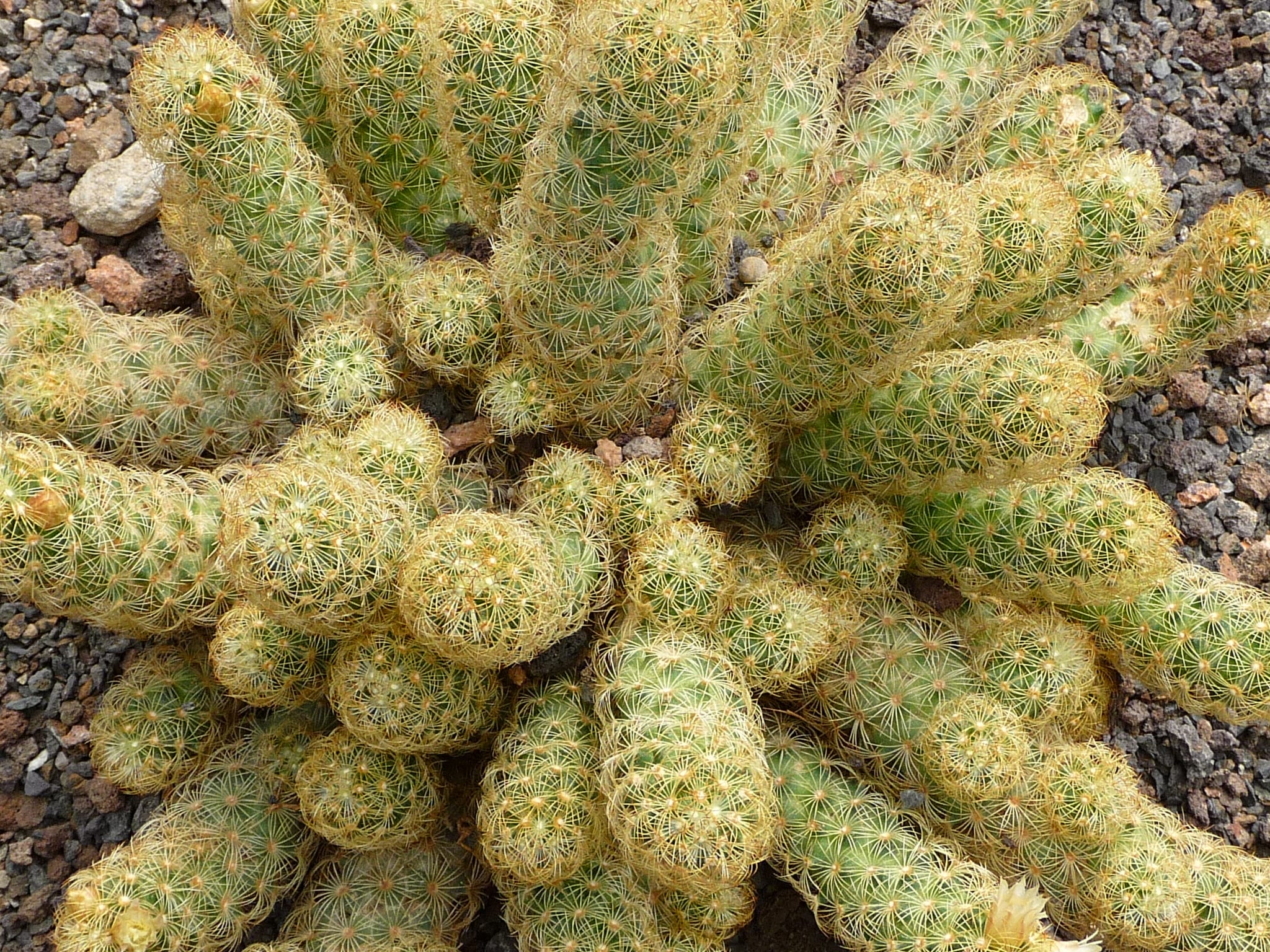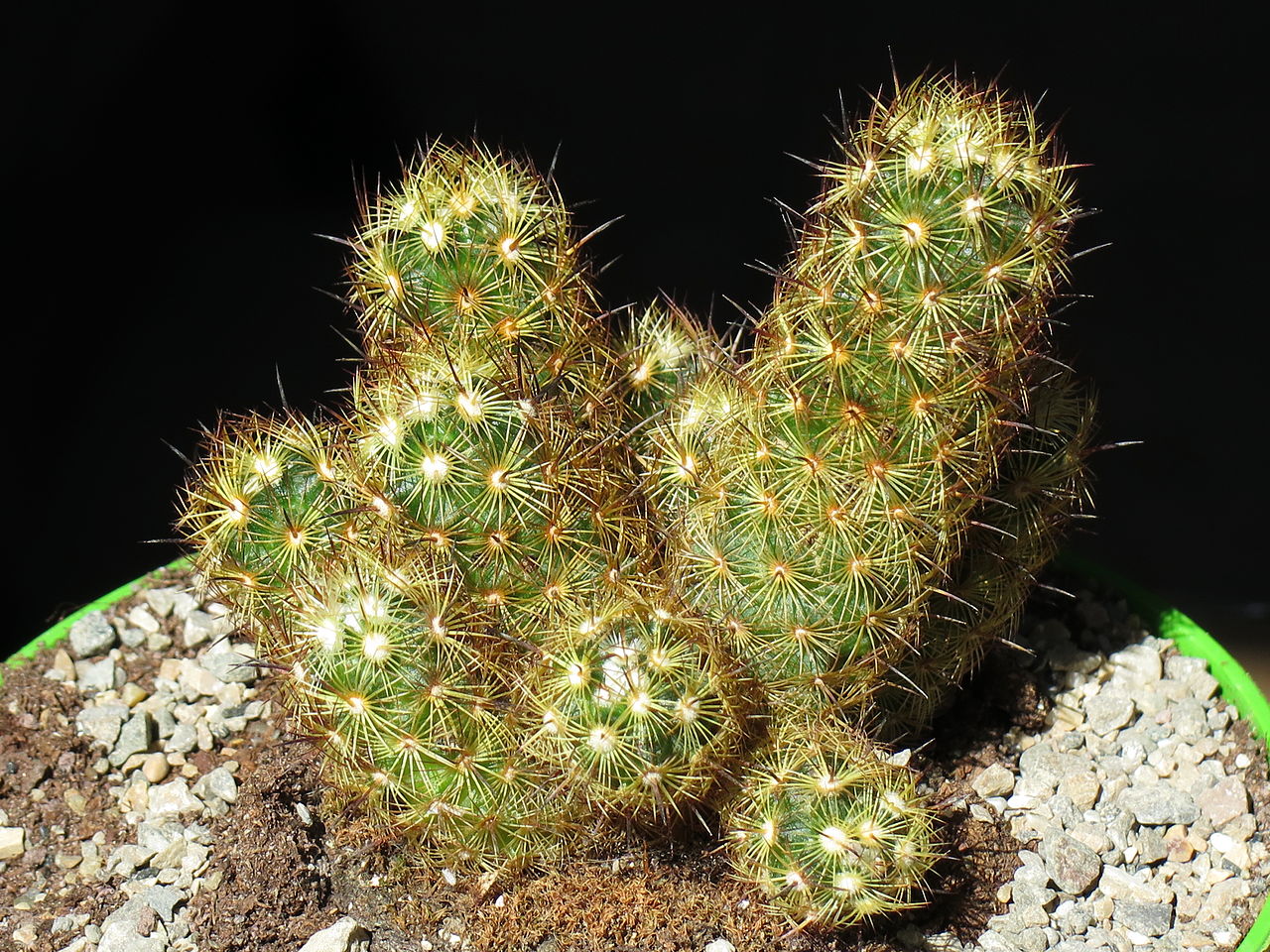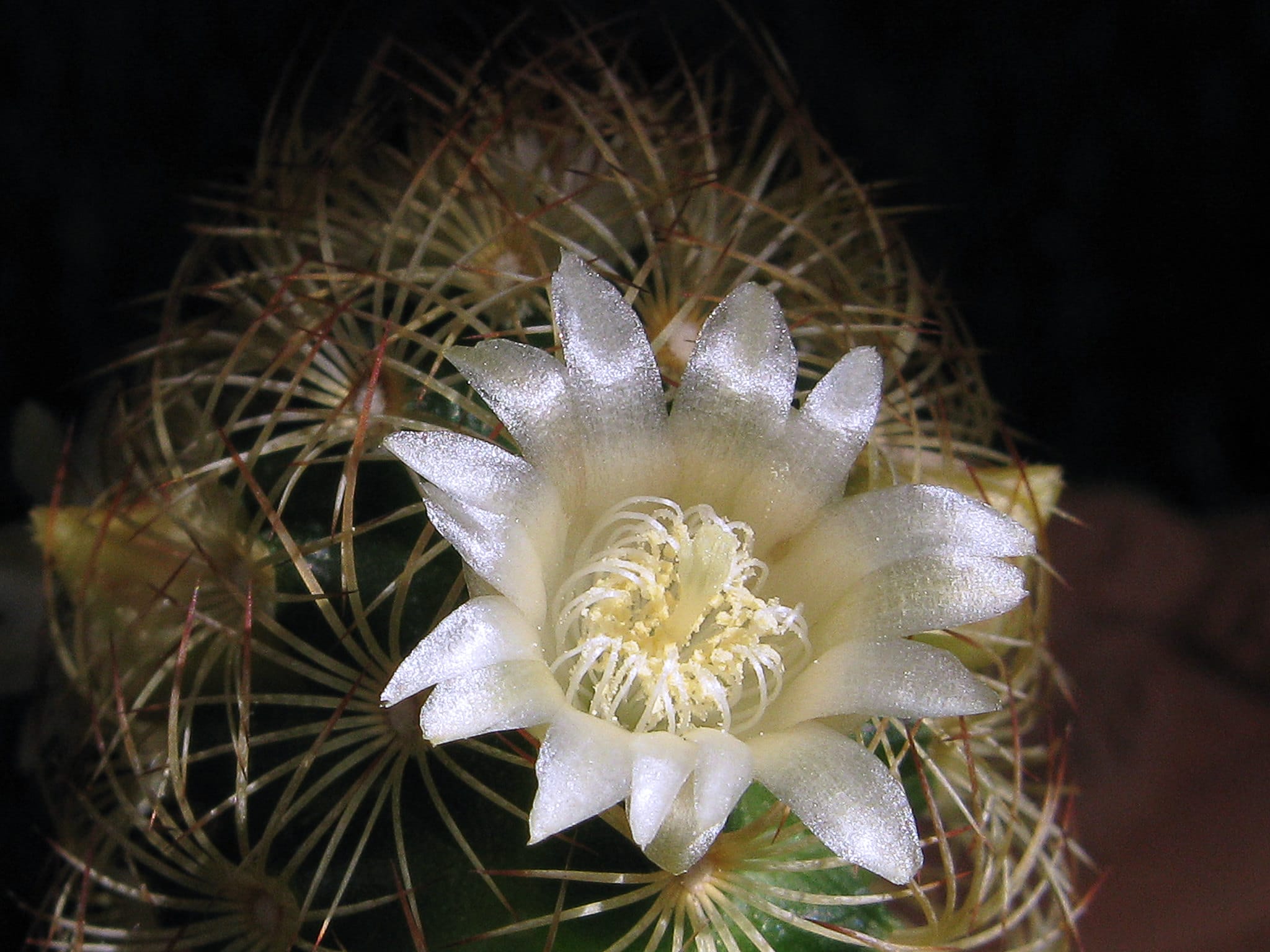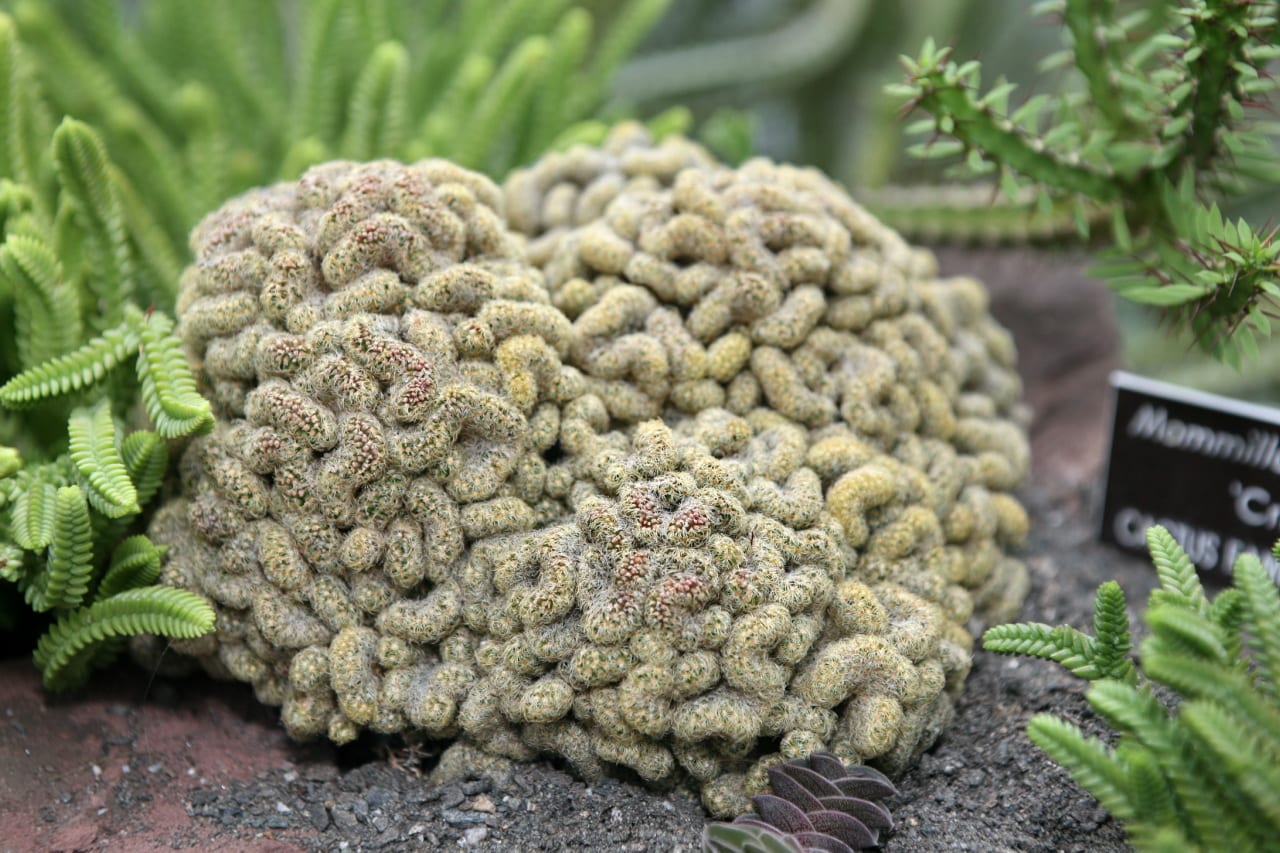
Image - Wikimedia / 3268zauber
Few cacti are as common as the Mammillaria elongata. Its easy cultivation and rapid multiplication have made this plant one of the favorites for those who begin to create their own collections of succulents, and it needs very little to grow in a healthy way.
With minimal care, you can enjoy its small but beautiful flowers every year, sure 😉.
Origin and characteristics of Mammillaria elongata

Image - Wikimedia / Petar43
Our protagonist is a plant native to the state of Hidalgo (Mexico) with multiple thin, cylindrical stems between 6 and 15cm in length and between 1,5 and 3,5cm in diameter. These can grow upright and creeping, depending on how far they are from the ground. The cactus is well protected by about 16 radial spines (those that surround the areolas) of white color, and 2 central ones, which can be red or yellow.
The flowers, which sprout in spring, are small, less than 2cm in diameter, and white to yellowish in color. They are very numerous and appear very early, even in very young 2-year-old plants.
How do you take care of yourself?
If you want to get hold of a specimen and take good care of it, here is its care guide:
Location
La Mammillaria elongata it is a cactus that has to be set outside, in full sun, because in semi-shade it does not grow well. Inside the house it does not adapt either; in fact, in this place it tends to grow a lot to etiolate, that is, to grow in an exaggerated way in the direction of some light source.
But be careful: if you buy a copy that was protected from the star king, DO NOT put it directly in a sunny exhibition since otherwise you will burn it. You have to get used to it little by little and gradually, exposing it for a longer and longer time to sunlight, and always early in the morning or at sunset, which is when the sun is not so high.
Irrigation
Irrigation must be rather scarce. In principle, It is watered two or three times a week in summer, and once every 6-7 days the rest of the year. In the event that there is a forecast of rain and / or frost, do not water until the substrate or soil has completely dried.
If you have a plate underneath, you have to remove the excess water 10 minutes after watering. In addition, you never have to water from above, and avoid planting it in a pot without holes since stagnant water rots its roots.
Soil or substrate

Image - Wikimedia / jacinta lluch valero
- Flower pot: you can use universal growing medium mixed with perlite in equal parts, but we recommend more the pumice or another type of small-grained volcanic sand (1 to 3mm thick).
- Garden: it grows in soils with good drainage, so if the one you have is not like that, you have to make a planting hole of at least 50 x 50cm, and fill it with the substrate or substrate mixture mentioned above.
Subscriber
From early spring to late summer It must be paid with a cactus fertilizer following the indications specified on the package. Use the liquids if you have your Mamillaria elongata potted (for sale here); On the other hand, if you have it in the garden you can use granulated fertilizers (for sale here) or powder.
Planting or transplanting time
It is a cactus that can be planted in the garden, or changed pot every two years, in spring. Its thorns are not particularly dangerous, but we advise you to wear gardening gloves at the very least to avoid hurting yourself.
Do it when the weather is good, and after the change do not water until 3-4 days have passed.
Multiplication
La Mammillaria elongata multiplies by seeds or by basal shoots in spring or summer:
Seeds
The seeds must be sown in pots or trays with universal substrate mixed with perlite in equal parts, so that they are separated from each other and somewhat buried. Then it is watered and placed outside.
Another option is to plant them in a seed germinator.
Stems
The stems can be cut with a previously disinfected knife when they are about 2-3 centimeters in size.. Then, they are left for a few days (more or less a week) in a dry place protected from the sun so that the wound heals, and afterwards they are planted in individual pots with substrate such as the pumice, in semi-shade but in a bright area.
In about 15 days they will emit their own roots.
Plagues and diseases
It is quite resistant in general, but you have to watch the snails during the rainy season. These animals are great eaters of plants, including cacti even though they have thorns.
Therefore, we advise you to use some home remedy to repel them, how to spread diatomaceous earth (for sale here) around of the Mammillaria elongata, protect your cactus with mosquito netting, or with beer for example.
Rusticity
It is a cactus that withstands cold and weak frosts down to -2ºC as long as they are punctual and of short duration.

Image - Wikimedia / Cliff // Mammillaria elongata f. crystal
What did you think of this plant?
Consult .. can I have this type of cactus in the office?
Hello Isaura.
If it is a room with a lot of natural light, yes, no problem.
A greeting.
I am just getting started in this Cactus and Succulents and I want to know more about their care, varieties and to be able to identify them ... Thank you very much for this information that you have just read ... super interesting ...
Hi Edo.
You will find much more information here y here.
A greeting.
Hello, could you tell me what to do if fungus appears… Mine after it bloomed turned yellowish and has like cotton fluff…. Thanks
Hi Yoanna.
Treat it with a fungicide, and don't water it until you see that the soil is completely dry.
Good luck!